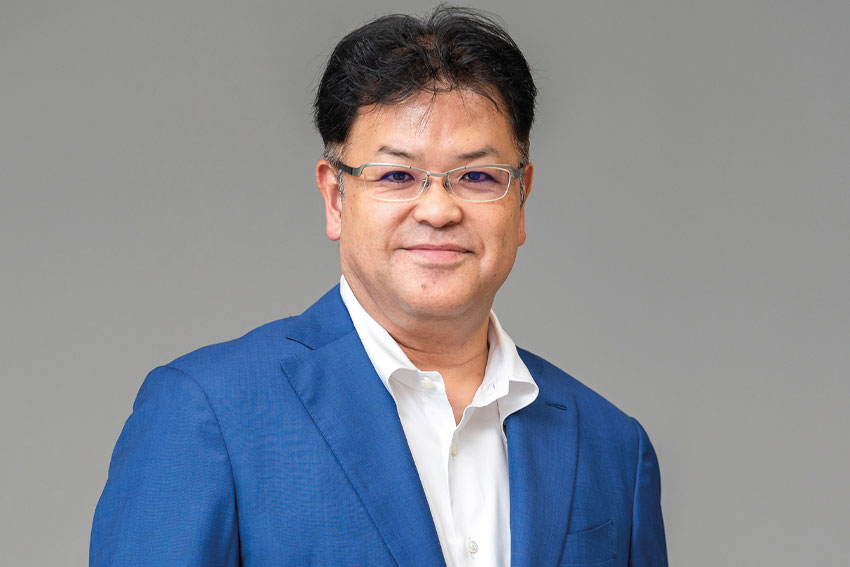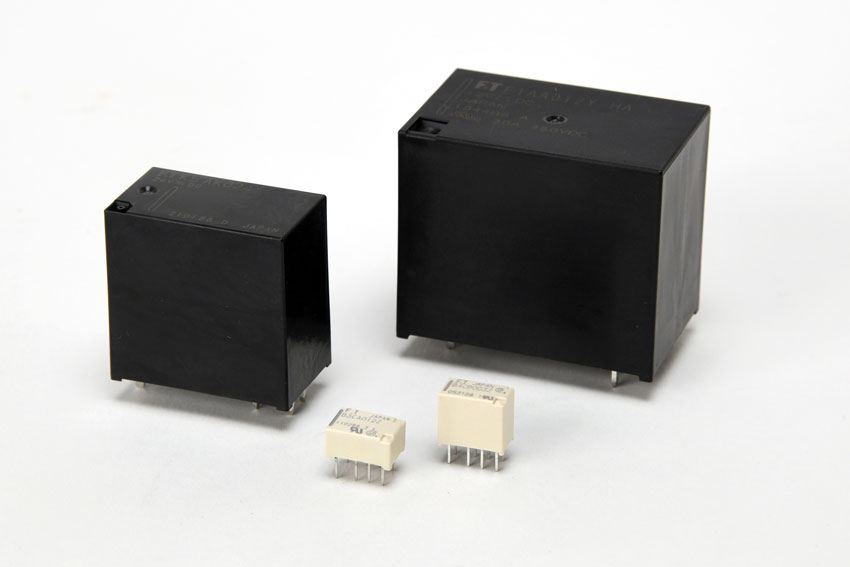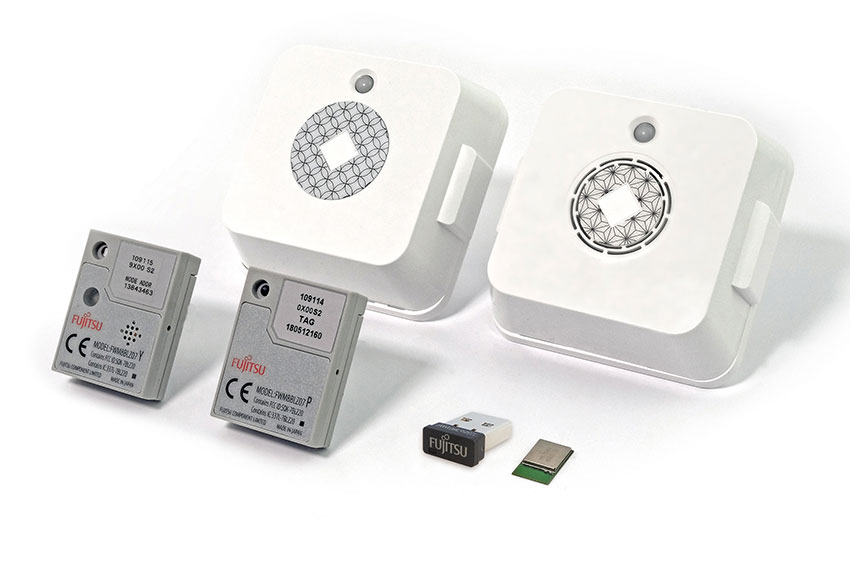A business partner with a customer centric approach, Fujitsu Component provides device related products such as relays at cost competitive prices.

Could you please elaborate more on your background and introduce yourself to our readers?
When I started my career, I worked for a trading company for seven years, and then I changed my career to become a certified public accountant (CPA). I passed the CPA exam in 1999 and worked for some auditing companies for four years. Then I moved on as a delegate in corporate planning. I moved to Panasonic as head of corporate planning and business development and spent four years in Japan. From 2016 to 2018, I spent time in the US and was involved in corporate venture capital for Panasonic. I was based in New Jersey for one year, and the Bay Area for two years, and now I am back in Japan.
Over the past 25 to 30 years, Japan has seen the rise of regional manufacturing competitors that have replicated Japanese monozukuri processes by taking advantage of cheaper labor costs and pushing Japan out of mass industrial markets. However, Japan is still a leader when it comes to niche B2B fields. How have Japanese firms been able to maintain their leadership despite the stiff price competition?
Japanese industry must compete against Korean and Chinese companies, and as you mentioned, Japan still has a good presence in the worldwide economy with companies like TDK and Kyocera taking large market shares. I think that in this industry, the point would be quality, cost and delivery. When it comes to cost, Chinese, Korean or Taiwanese manufacturers are much cheaper than us, but quality wise, Japanese companies may be the best providers globally.
Why is that? First, we can develop products based on the customer's request. Having frequent conversations with customers keeps their voice relevant in the design and engineering process, so in a sense, our engineering capability for products is one of the key factors for competitive advantage. The second reason is that every product is undergoing miniaturization, so we have to produce very small products on a mass production basis. That is quite hard, especially when some factories operate in foreign countries. It is very difficult to manage foreign factories as well. However, we have successfully developed engineering for production lines and the machinery itself. We have some in-house engineers for machine development. We also have some expertise in operating foreign factories and transferring skills. It is important to maintain discipline and motivation for foreign workers. That is also a core competence of Japanese manufacturers.
The balance between cost and quality is important, so for Japanese companies, quality is the priority, and then we look at cost. Japanese companies make better quality products to compete with. When we talk about cost, we do not mean cheaper is better. It is about what customers are willing to pay. Maybe Japanese manufacturers can provide good quality that the customers are willing to pay for. We also have some strength in after-sales, so we can provide our product as the customers require. Some of the foreign players discontinue their products as they become unprofitable, which we do sometimes. But when we discontinue a product, we carefully let the customer know, and take some time to do more production for them.
Moore's Law states that the number of transistors on a microchip doubles about every two years, and we are seeing a trend of miniaturization, with electronic devices having more added functionality as a result. Can you tell us in more detail how you are reacting to this miniaturization trend?
Originally, we started with signal relays, which are quite niche products. We already had an advantage in design capability, but on top of that, we have recently been collaborating with some material manufacturers to make them smaller. In reducing the size, we reduced the weight using material that came from the collaboration with the material manufacturer. Also, some need smaller chipsets with high specification, and we sometimes switch our core chips to more highly functional ones and reduce the overall product size at the same time.
Japan has the world's oldest society and a rapidly decreasing population, which presents challenges such as a labor crisis and a shrinking domestic market. What are some of the challenges and opportunities you see with Japan's demographic shift?
That is a headache, especially on the production side. As you said, the Japanese population is aging and a large proportion of it consists of seniors aged above 60. In Japan, 60 to 65 is retirement, so every year we have shortages in the labor force. On top of that, most Japanese manufacturers shifted their processes from Japan to foreign countries in the late 90s and early 2000s. So there is a shortage of key personnel in Japan’s manufacturing sector.
We are adapting by extending the employment period for senior employees who have good expertise in production and combining them with more young or middle-aged staff. The senior people who have good expertise can teach the younger employees. Also, in foreign factories, we are empowering local management more and more. Normally, we would expect to have six or seven Japanese experts in a foreign country, but now we have reduced that number and have further empowered local people in Malaysia and China.
One relay Fujitsu Component offers is the FTR-K5 series, which was developed in 2019. It is the world's first 6.6-kilowatt power supply for EV and PHV onboard chargers, and a high-capacity, highly reliable board mounted relay, that offers manufacturers the ability to extend the cruising range of electric vehicles. Can you go into more detail about how the FTR-K5 series is superior to more conventional relays on the market?
We are currently supplying the FTR-K5 to major car manufacturers, such as Toyota and Nissan EV/PHV, and also our competitors. The relay complies with the strict automotive standards concerning vibration resistance, operating temperatures, and insulation class meets IEC61810-1 277V enhanced insulation standards. The size of relays is a competitive arena. Other considerations are low energy consumption and resistance to high temperatures. When a product is delivered, it may have not only an onboard charger but also a charging station people can use at home.
There has been a major shift in the automotive sector when it comes to Connected, Autonomous/Automated, Shared, Electric (CASE), with cars becoming like computers on wheels. The cost share of electronic components in the car will increase to about 35% by the year 2025, which is up from 16% today. How are you adapting to this shift in the automotive industry, and what opportunities does this new emphasis on electronics present for Fujitsu Component?
Yes, that is actually our sweet spot, especially EVs today. We have the FTR-K5 and the FTR-E1 series, which are more of a fit for EV relays and power control. Regarding CASE, this could be a gateway to opening the EV market. Our parts are also involved in cases of emergency. In connected cars, when an accident happens, the car automatically connects to an emergency center. We have already provided FTR-B3 and FTR-B4 relays for this. They are signal relays inside of the car that are used for connectivity.

Relays
In addition to automotive, we know that your products are used in a variety of other applications: FA equipment, mobile terminals, healthcare and many more. Are there any new applications that you are looking to introduce your products to?
Yes, I think so. Sensors are one. Our processors can detect human or building (e.g. earthquake-related) movement. Therefore, if a person is inside a car or a kindergarten shuttle bus, the processor would catch the movement.
In addition, we have been offering mesh network products in collaboration with Wirepas Ltd. The devices construct a scalable decentralized network and have autonomous network rerouting capacity. We have expanded our lineup since the release of the first product in 2020. The products are the best of their kind for asset tracking and environmental sensor data collection in large hospitals, factories, offices and schools.

Mesh network products
Another example is high-voltage or high-current relays for quick charging, which is what customers want, so we are working on it.
You have jointly developed a non-contact vital sensing technology with Carea Corporation, consisting of your Doppler sensor technology. This sensor technology can support low speed, weak pulse, and different forms of sensing. What are some of the advantages of this non-contact vital sensing technology that you have developed, and what other applications do you see for it outside of healthcare?
For some industrial factory operations, we can use the non-contact vital sensing technology to detect a failing machine in the production line. This technology was jointly developed with another partner. Or as I mentioned, it could use the Child Presence Detection (CPD) by testing human movement.
In September 2022 Fujitsu developed the Vital Sensor. What are you expecting from this product, and what solutions can you provide to customers?
We are now collaborating with some companies, and that is the first product to come into the market, but as I mentioned, we are developing more for automotive, factory, and healthcare applications in the near future.
The project itself started in 2017. One engineer who was familiar with our wireless technology started to think about leveraging it in other applications. He pointed at human movement.
In order to market our global sensors, we needed a partner to help build up a system of the sensor market, and in this case, it was Carea Corporation and another partner Reality AI. The partners we choose depends on the solution which we would like to provide.
When it comes to sensing, there are many different barriers. Sensing in a car is different from sensing in healthcare applications. Can you share with us some of the challenges that you had to overcome during its development?
Not limited to cars, the requirement for each application is unique and specific. We needed some ideas and technology based on the application from specialists, so we are more open about which partner would be the best for each application. Our engineers always look for good partners.
Are you open to just purely domestic partnerships, or are you also open to international ones?
We are very open to partnership everywhere. Our company became independent in 2019. Before then, our business and technological skills came from Fujitsu Laboratory, the sister company, but now that we are independent, our engineering resources are limited and we cannot do everything by ourselves. We will collaborate positively with universities or startups and all the big players to develop more advanced products, so we are open to joining forces with third parties.
It has been almost four years since your company became independent. What benefits are you reaping from it?
Fujitsu itself was a diverse hardware business before it became more software oriented, but the good news is that once we became independent, our decision-making process became much quicker. Our HR system and reward systems were optimized with our business style, and that changed a lot of things. We do not have the same system as Fujitsu. Our system is more open to employees who achieve good performance.
Ever since the Japanese government stated that the country needed to be carbon neutral by the year 2050, Japan’s industry has been outspokenly ambitious in the attaining and setting of carbon neutral targets. Can you elaborate to us what efforts you are making in order to contribute to a more sustainable society?
We have been talking about our carbon footprint and improving energy efficiency, as well as about reducing factory waste, and the waste from the company in general. We are now organizing a cross-functional team from across the whole company, and the goal will be to get gold status from EcoVadis. Currently we have silver status, but we want to achieve gold.
Regarding the product itself, we are going to provide relays for reducing energy consumption even for miniaturized models, which would mean reducing the weight of the product. This would lead to a reduction in energy consumption.
As a company providing such high-quality components for different types of industries, how are you able to achieve the same quality in your overseas operations?
It is mainly thanks to continuous training or education. Another reason why we are able to provide stable quality is because we abide by, and are certified by, international standards such as ISO and IATF for factory operations and management. Compared to European and US firms, Japanese companies have a very precise manual when it comes to maintaining quality. It is a whole process.
The last two years with the COVID pandemic have impacted global supply chains, shipping and logistics. What were some of the effects that this had on your business, and how did you overcome them?
It was quite hard to deliver the product on time. The worldwide shipment schedule was impacted. In particular, we have a factory in Shanghai, and some of the products ship to the US, and it was a terrible situation. On top of that, there was some difficulty with the increase in the price of freight. We had to plan carefully in advance, taking into account some longer periods of delivery schedules, and we still had to keep some inventory to help with sales as a result. We are also planning more carefully which ships to use, or whether to use air in some situations. With regards to the general inflation of global prices, we have to ask our customers to meet the increased prices.
Can you share with us some of the initiatives, or changes, that you have brought to Fujitsu Component as a result of the pandemic?
We generally made the shift from working on site to working from home, particularly at the head office and sales offices. We introduced more freedom so that everyone could work from home.
Apart from relays and sensors, you also offer touch panels and thermal printers, a market in which you hold the second largest share. Could you please give us an overview of these two businesses, and what are the strengths and benefits that you can provide to your customers?
In terms of touch panels, we have some cost benefits and also the quality of the product, and for printers, we have a large variety of products. The thermal printer business started about 40 years ago and we have technical engineers with expertise in that area.
Could you share with us your mid-term strategy for the next 5-10 years?
Around 2019 to 2020, we were in a tough situation because of COVID and the shrinkage of the market along with the global economy, but since last year, we have been going through a growth phase, and our performance recovered rapidly.
We have good products for the EV market, and we also have a stable cash flow. By leveraging those products, we could have further growth in the future when our top range increases to around 20% within a few years.
Moving forward, what countries or regions are you targeting for growth in as part of your mid-term, and what strategies will you employ to do so?
It depends on the product, and whether it's suitable for the EV market. Japan, China, Europe and the US are the main markets for EV relays. Regarding our module business in Europe, the Netherlands and France, we will use it to then step more into the Asian or U.S. markets.
Regarding thermal printers, we are already providing good printers in Europe, so now we are trying to step into the more developed US market, and Japan as well. As for touch panels, we have equipment here in Japan, so we are targeting more developed foreign markets like the US or Europe.
We will find the right distributors in Europe, the US and Asia, by increasing the capability of our sales force. We already have enough distributors in neighboring regions. We have meetings with our distributors, every year, and we let them know our direction - where we are and where we are heading - and we share our strategy. We set the focus on particular products and markets and ask them to develop each of them.
Imagine we come back to interview you again in seven years' time. What would you like to have achieved by then?
We want to develop more overseas sales. Now, almost 60% of sales come from foreign trade, but we want to further increase that amount because, as you said, the Japanese market is going to shrink. So we need more chances to develop in the US, Europe and Asian countries, including China.
We should be more open and have more frequent communication with our foreign offices and foreign customers directly in English. I am personally open minded because I lived in the US for three years prior to Fujitsu, and I also should be more open to collaborating with third parties, especially foreign parties.
0 COMMENTS